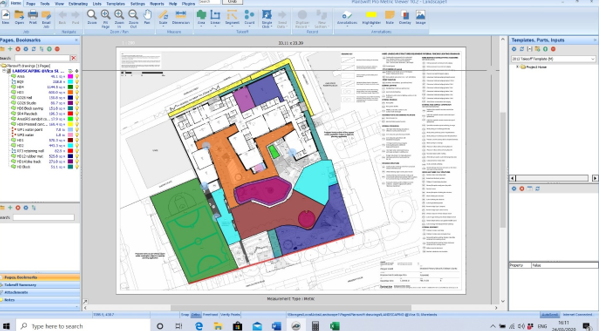In world of construction, accurate estimating is paramount to project success. With rise of technology inn construction filed, construction estimating software has undergone significant advancements, revolutionizing the way estimators work.
Introduction:
Construction estimating services play a crucial role in the planning and execution of construction projects. Cost estimators analyse construction project requirements, materials, labor costs, and other factors to provide accurate takeoffs and cost estimates. Traditionally, this process involved manual calculations and extensive paperwork. Latest construction estimating software has transformed the construction landscape, streamlined processes and enhanced accuracy in estimation.
Trend 1: Integration with Building Information Modelling (BIM)
One of the prominent trends in construction estimating software is its integration with Building Information Modelling (BIM). BIM technology allows for the creation of digital representations of buildings and infrastructure, enabling seamless collaboration and data sharing among project stakeholders. By integrating with BIM, estimating software can extract valuable data directly from the model, leading to more accurate and efficient cost estimates.
Trend 2: Cloud-Based Solutions
Another significant trend is the widespread adoption of cloud-based construction estimating software. These latest softwares offer number of benefits, including accessibility from anywhere with an internet connection, real-time collaboration, and automatic updates. Cost estimators can access project data, collaborate with team members, and generate estimates on-the-go, enhancing productivity and flexibility.
Trend 3: Artificial Intelligence and Machine Learning
Artificial intelligence (AI) and machine learning (ML) are revolutionizing construction estimating processes. Advanced algorithms analyze historical data, identify patterns, and make predictive insights, leading to more accurate cost projections. AI-powered estimating software can automate repetitive tasks, such as quantity takeoffs and material cost calculations, allowing estimators to focus on value-added activities.
Trend 4: Mobile Applications
Mobile applications have become indispensable tools for construction professionals, and estimating software is no exception. Mobile apps enable estimators to access project data, create estimates, and communicate with stakeholders directly from their smartphones or tablets. This mobility enhances collaboration, accelerates decision-making, and improves overall project efficiency.
Trend 5: Enhanced Visualization and Reporting
Modern construction estimating software offers enhanced visualization capabilities, allowing users to create 3D models, virtual mockups, and interactive reports. Additionally, advanced reporting features enable construction estimators to generate comprehensive reports with customizable templates, charts and graphs.
Conclusion:
The trends in construction estimating software reflect the industry’s ongoing commitment to innovation and efficiency. From integration with BIM to the adoption of AI and cloud-based estimating solutions, these advancements are reshaping the way cost estimators work, leading to more accurate construction takeoff services, streamlined processes and improved construction project outcomes.


